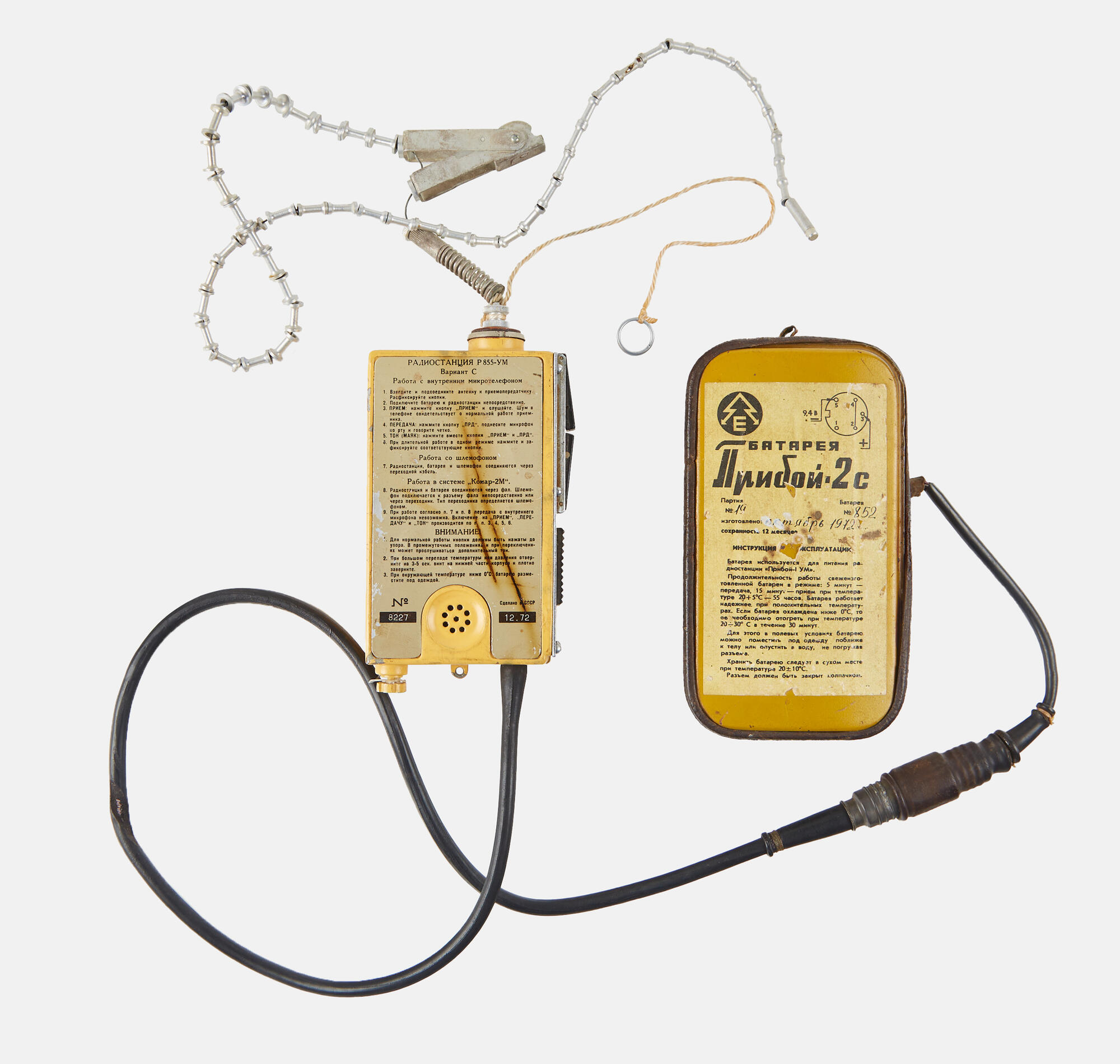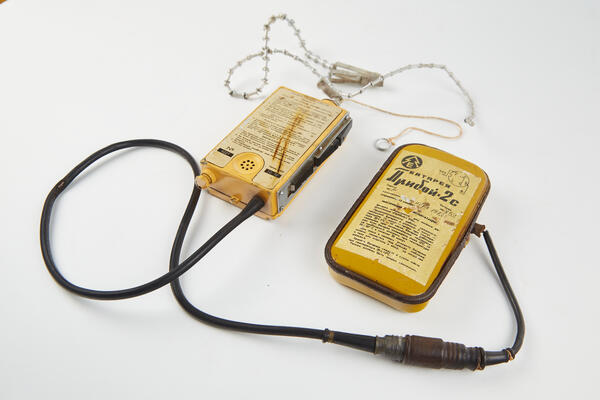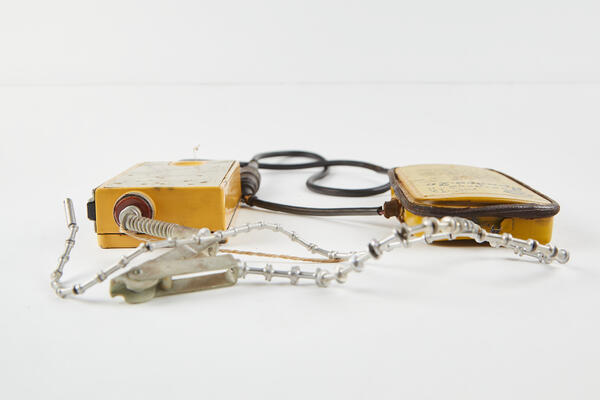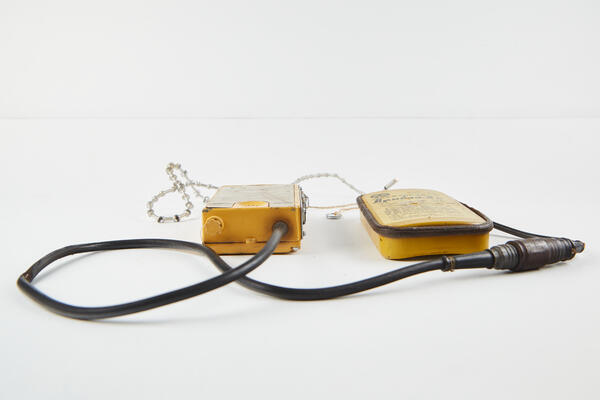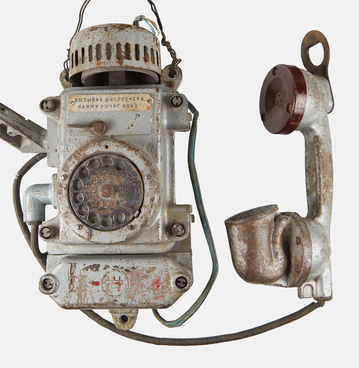The collection of the Rusanov House Museum contains a portable radio that was used in 1977 by the participants of the scientific and sports expedition of the Komsomolskaya Pravda newspaper. The team searched for the missing expedition of Vladimir Rusanov in the waters along the Taymyr Peninsula.
The radio transceiver R-855 UM is used in aviation in emergency and search situations. It is part of the airplane and helicopter equipment and survival kit. A survival kit is a package of basic tools and supplies prepared as an aid for survival in an emergency. Supplies in a survival kit normally include signaling gear, water, food, and a first aid kit. Signaling gear is part of an emergency locator beacon Komar-2M. The set includes an inflatable buoy with a built-in antenna, a battery Priboy-2S, a radio transceiver R-855 UM, a separate whip antenna, and a carbon dioxide cylinder. The beacon turns on automatically under various extreme conditions, for example, when crew members land with parachutes on various surfaces (land or water). Upon landing, the carbon dioxide automatically starts to inflate the buoy with the antenna, the transceiver, and the battery inside, and a distress signal starts to be transmitted.
The radio operates in the meter frequency band on a
fixed radio frequency of 121.5 MHz (megahertz). This frequency has been
designated internationally for use only in distress. The transmitter output
power is 130 mW (milliwatts). The radio station can operate as a radio beacon
with a tone frequency of 1000 Hz and as a simplex radio to communicate with
rescuers. The radio is waterproof to work in water. The beacon can transmit
continuous signals for 24 hours. The ambient temperature operating range is
from –50 °C to +50 °C. Communication signals are limited to the line of sight.
When a signal with a frequency of 121.5 MHz is received on board the rescue
ship, it is transmitted to a radio compass, for example, RKU-2, and used to
find those in distress.
